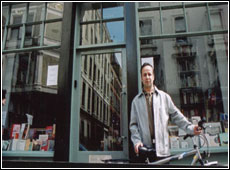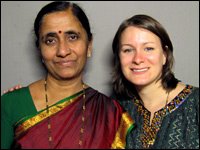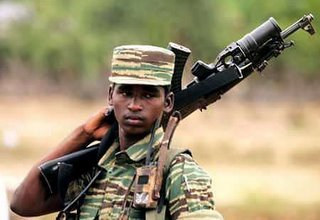
The News, Pakistan
Opinion
January 29, 2006
By Nadeem Hussain
Nadeem Hussain, CEO of Tameer Microfinance Bank and former country head for consumer banking at Citi Group
Unlike any other formal sector in Pakistan, last year the domestic banks really saw the sun shine on their bottom line. While other industries grew at more modest rates, and many actually suffered, the annualised growth in profit after tax for the domestic banking sector was an unbelievable 90 per cent. Such windfall profits have not been experienced in the recent past and are unlikely to be experienced in the near future. The questions that emerge are inter-related: What was the principal reason for this phenomenal growth? Was it driven by just economic growth, or were some of these profits obtained at the expense of its small customers? And whatever its source of profits, once it was flush with money, did the banking sector as a whole use its windfall profits to increase the services they offer to the community at large?
The adage a rising tide raises all ships was very evident in the domestic banking sector as practically all listed banks regardless of the effectiveness of their strategy; quality of management, or product offering experienced a profit growth. In terms of absolute profits the National Bank of Pakistan led the way with profits of Rs8.7 billion followed by Muslim Commercial Bank at Rs5.3 billion and United Bank Limited at Rs3.8 billion. In terms of growth MyBank led the pack with a rate of 245 per cent While it had the benefit of starting of a small base, MCB needed no such caveat, achieving a growth rate of 176 per cent. Other banks that got into triple figure growth rates include Bank al Habib 163 per cent Union Bank 109 per cent National Bank of Pakistan 107 per cent and Meezan Bank 103 per cent. The only institution that suffered a loss was Crescent Commercial Bank.
Let us examine the typical reasons for the sector's profitability enhancement. An increase in the money supply, or the amount of cash swilling around in the economy, was not the reason for the swelling coffers of the banks. A look at the recent figures should verify this contention: Although money supply increased by a healthy 18 per cent in 2005, the money supply in 2002 had increased by a similar amount and was even higher in 2004, at 19 per cent, however, the corresponding profit after tax growth was significantly lower. So clearly money supply by itself was not behind these skyrocketing profits.
Another factor that can impact the profit of a bank is obviously its own balance sheet. In this context size is everything. An analysis of this statistic indicates that while the sector deposits and advances grew by 17per cent and 22per cent respectively in 2005, the previous two years indicate growth rates in excess of these numbers. So this again by itself cannot be the main reason for the profits either. It seems then that the principal reason behind the sector's big gains last year was the difference or spread between its cost of funds and its lending rates. The cost of funds of a bank is defined as the sum total of interest it pays on the various types of deposits it generates from the public or from other banks. While the lending rate comprises of an aggregate of all the interest it earns from its total stock of loans. Commercial banks earnings are therefore largely derived from this spread minus its operating costs and any bad loans it writes off.
In June 2005 this spread increased to 7.44 per cent compared to 6.33per cent in June 2004. When you combine this with the aggregate growth in deposits and advance the real reason for the outstanding profits for the sector emerges. To get a better understanding of this phenomenon we need to peel the onion further and analyse the factors, which allowed the sector to maximise their spread. In 2005 the banking sector was able to enhance its lending rates for two reasons. Firstly, they benefited from the fast growing consumer finance segment, which grew by a robust 79 per cent albeit off a small base. Effective lending rates in this segment range from 30 per cent plus for credit cards followed by 20 per cent plus for personal loans. This was followed by another high interest rate sector, that is, the SME sector with an aggregate growth of 30.5 per cent. Secondly, while banks decreased their lending rates for large customers as the Treasury bill rate declined, they delayed the passing on of the lower interest rate benefit to their medium and smaller customers.
If we continue to peel the onion further, we finally get to the dominant factor for the sector's profitability. The sector's effective cost of funds is estimated to be an envious 1.4 per cent in June 2005. The deposit mix of a bank in turn, determines the cost of funds. This typically comprises of interest free accounts, savings accounts, fixed deposits and interbank borrowing. The funding objective of the banks is to obviously minimise their cost of funds by having the largest funding base from the interest free or low interest based savings account. Our banking sector, especially the big five banks with their huge branch networks derive the bulk of their funding, 87per cent from this source, while the sector provided institutions and large depositors with market based rates.
Unfortunately, banks across the board offered a dismal rate of return, as low as 3 per cent on their savings accounts for their small customers. When this rate is compared with the inflation rate of 8 per cent and combined with the fact that profits declared on these accounts are also subject to a withholding tax of 15 per cent, it becomes clear that the largest number of customers of the banks who were principally responsible for their spectacular results were not only provided with a low rate, but actually experienced a negative rate of return. This means that as a store of value of the money that the small depositor put in the bank after receiving their profit was actually worth less in terms of purchasing power compared to what they had initially deposited in the first place.
Surely this iniquitous relationship needs to be addressed by the banks' management if not the State Bank of Pakistan. In the United Kingdom, which is a market based economy, in the early 80s when banks experienced such phenomenal profit growth the government actually imposed a one off windfall tax to redress the situation. While such a drastic measure is not advisable here, an equitable solution is sorely called for. Banks themselves can start to address this by devising solutions like money market or hybrid deposit products for the small customer that should come close, if not match the rate of inflation to preserve the store of value. Commercial banks should also be prepared to lower their profit targets to better meet the needs of their small but profitable customers.
Having established that the sector has a long way to go to reward the hand that feeds it, let us now look at what the sector did in 2005 to address the community at large in terms of services. In order to assess the sector's performance we need to examine the outreach, in other words, how many borrowers and depositors does the sector cater for? Which segment of the market does it lend to? And lastly, where does it borrow from and where does it lend? In a population of 150 million, the total number of borrowers the sector can boast of is only 4.1 million. A penetration of only 2.7 per cent. If one takes out the consumer finance borrowers then, this number drops to only two million borrowers. On the deposit side the position is worse. Other than the deposit rate already mentioned, banks need to provide better service, especially in rural and non main branches for this customer base to encourage them to enter the formal banking sector.
If one looks at the composition of the borrowers, the corporate sector, as expected, dominates with 52 per cent of all lending. However, what stands out is the low level of lending done to the agricultural, SME and the microfinance segments. Agriculture which contributes 25 per cent of our GDP and directly/indirectly employs 60 per cent of our labour force has only an eight per cent share of all lending to 1.5 million borrowers. While it is recognised that the legal remedies in this segment need improvement, surely banks can use more of their recourses to address this need. Similarly the engine of growth of our economy, the SME sector only commands 17 per cent of the lending stock while the microfinance segment is non-existent. Commercial banks also need to better balance the rural urban imbalance. On the deposit side the banking sector raises significant amount of their lowest cost deposits from the rural areas, while only a fraction of these deposits are lent back to the rural segment.
With a lower GDP growth, increasing inflation and a rising Treasury bill rate, it is expected that the sector's profitability will be lower than 2005. Notwithstanding, the sector profits are still expected to grow significantly and remain higher than corporate earnings as they continue to benefit from low cost of funds and higher yielding consumer finance and SME loan portfolio. In 2006 the banks must re-evaluate their relationship with their small customers which provide over 60 per cent of their funding and were the major reason for their outstanding profits. The banks must also re-balance the urban rural divide and lastly, increase their outreach to provide banking services to a larger segment of our population. Bumper profits are always a good thing for any business, particularly banking, but without a more equitable service to its small-customer base, it all starts amounting to the snake eating its tail.
The writer is CEO of Tameer Microfinance Bank and former country head for consumer banking at Citi Group
 Financial Times
Financial Times




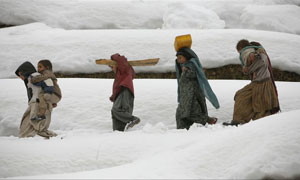

 rights revolution of the 1960s and a tireless advocate for a long litany of social and political issues ranging from women's rights to the struggle against apartheid in South Africa that followed in its wake.
rights revolution of the 1960s and a tireless advocate for a long litany of social and political issues ranging from women's rights to the struggle against apartheid in South Africa that followed in its wake.





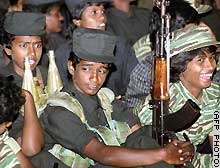

 and the politics of software.
and the politics of software.








